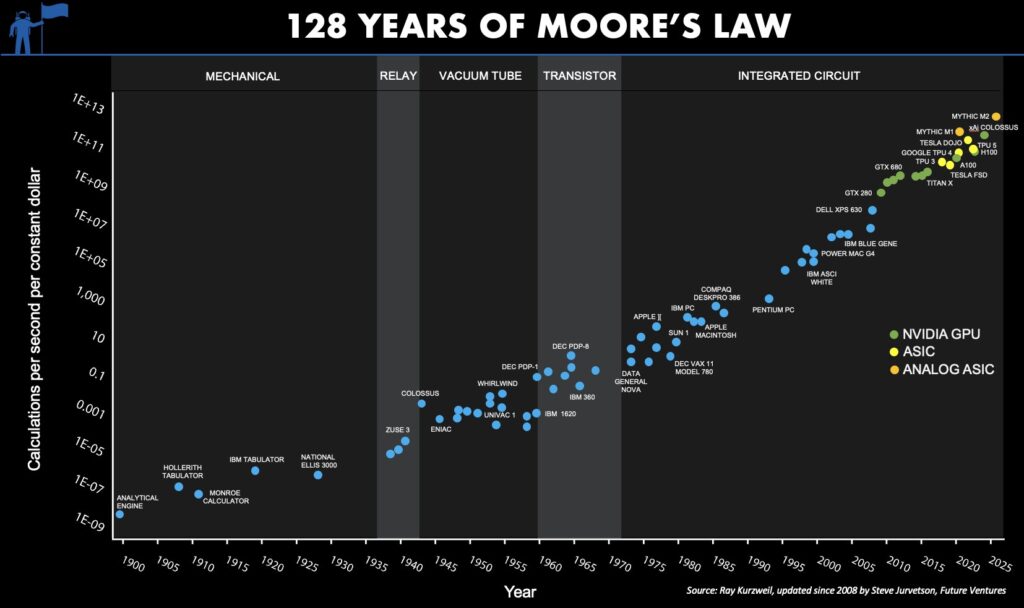
Steve Jurvetson, the renowned venture capitalist behind early investments in SpaceX, Tesla, and Hotmail, has unveiled a groundbreaking perspective on computational advancements through what he calls “the most important graph ever conceived.” In a recent post on X, Jurvetson laid out a comprehensive timeline of over a century of exponential growth in computational power, underpinned by Moore’s Law.
The Century-Long Impact of Moore’s Law
Moore’s Law, first articulated by Intel co-founder Gordon Moore in 1965, predicts a steady doubling of transistor density in integrated circuits roughly every two years. However, Jurvetson emphasizes that its true significance lies in the exponential decline in computational costs, which has transformed nearly every sector of the economy.
His meticulously crafted graph traces the evolution of computation, from mechanical calculators to relay-based systems, vacuum tubes, transistors, and finally integrated circuits. It reveals a staggering 1,000,000,000,000,000,000,000x improvement in computational power per dollar over the last 128 years.
Technological Transitions: From GPUs to ASICs
Jurvetson highlights the recent shift in computational leadership from GPUs to ASICs (application-specific integrated circuits). He notes that NVIDIA’s Hopper architecture exemplifies this transition, blending GPU performance with ASIC-like efficiency optimized for AI models.
He predicts that the next frontier will feature custom ASIC chips and analog in-memory compute technologies, which mimic the human brain’s architecture and promise transformative advancements in AI capabilities.
Moore’s Law: Still Relevant for the Next Two Decades
Despite skepticism about its longevity, Jurvetson asserts that Moore’s Law will persist for at least another 20 years. This continued trajectory will enable breakthroughs across industries, from biotechnology to autonomous systems. He states, “Every industry on our planet is going to become an information business,” highlighting how advances in computational power will redefine traditional sectors like agriculture, manufacturing, and healthcare.
Why This Graph Matters
Jurvetson’s analysis underscores the profound economic and societal impact of computational progress. He argues that Moore’s Law is not merely a measure of transistor density but a force driving exponential growth in global innovation. As industries increasingly rely on simulations over trial-and-error experimentation, the pace of discovery and market disruption accelerates.
He states, “Technology’s exponential pace of progress has been the primary juggernaut of perpetual market disruption, spawning wave after wave of opportunities for new companies. Without disruption, entrepreneurs would not exist.”
A Future Defined by Information
In a world where computational costs continue to plummet, Jurvetson envisions a future where data drives every aspect of life. He gives examples like satellite-powered precision farming and AI-optimized seeds to illustrate how agriculture—and every other industry—will transform into an information-centric enterprise.
“Every industry,” Jurvetson says, “will eventually depend on how effectively it leverages information technology.”
Steve Jurvetson’s insights into computational advancements reaffirm the enduring significance of Moore’s Law. His declaration that this graph represents “the most important graph ever conceived” reflects the transformative power of exponential growth in computation, which continues to redefine economies, industries, and the boundaries of human innovation.